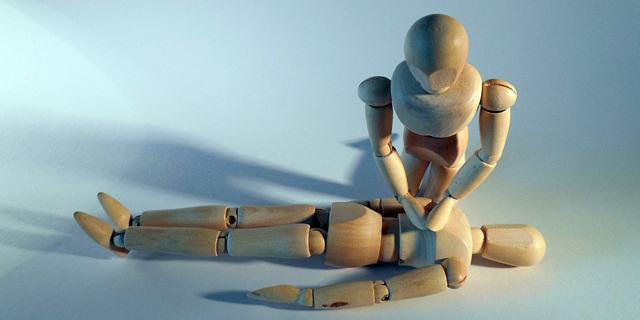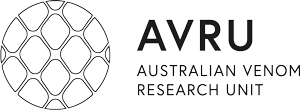First Aid
This is for reference and education only, if you have an emergency please call 000 immediately. For medical information please call the Poisons Information Centre on 13 11 26.
Pressure-immobilisation First Aid for venomous bites and stings
The pressure-immobilisation first aid technique was developed in the 1970's by Professor Struan Sutherland. Its purpose is to retard the movement of venom from the bite site into the circulation, thus "buying time" for the patient to reach medical care. Research with snake venom has shown that very little venom reaches the blood stream if firm pressure is applied over the bitten area and the limb is immobilised. Pressure-immobilisation was initially developed to treat snakebite, but it is also applicable to bites and stings by some other venomous creatures. It is currently recommended for most life threatening venomous bites and stings in Australia.
Pressure-immobilisation is recommended for: | Do not use pressure-immobilisation first aid for: |
All Australian venomous snake bites, including sea snake bites | Other spider bites, including mouse spiders, white tailed spiders and redback spiders |
Funnel web spider bites | Jellyfish stings |
Blue ringed octopus bites | Stonefish and other fish stings |
Cone snail (cone shell) stings | Bee and wasp stings |
How to apply pressure-immobilisation first aid
Or download "First Aid for Snake Bites in Australia and New Guinea (PDF 335.2 KB)".
Snakebite
First Aid for snakebite (all land and sea snakes)
- Phone or send for medical assistance, dial 000.
- Reassure the person and encourage them to remain calm.
- Have the person remain as still as possible. Do not attempt to catch or kill the snake.
- Apply a pressure bandage to the envenomed limb (see below). If the bite is to the trunk, apply firm pressure to the bitten area. Do not restrict chest movement.
- Splint or sling the limb to restrict movement. Where possible, help should be brought to the person rather than moving the patient.
Preventing snakebite (land snakes)
- Leave snakes alone.
- Do not attempt to catch or handle snakes.
- Wear stout shoes and adequate clothing, including long trousers, in 'snake country'. Do not wear sandals or thongs.
- Never put hands in hollow logs or thick grass or under woodpiles, building material etc without prior inspection.
- When stepping over logs, carefully inspect the ground on the other side.
- Keep barns and sheds free of mice and rats as they may attract snakes.
- Keep grass well cut - particularly in playgrounds, around houses etc.
- Take care around houses, barns etc on warm nights, as snakes may be active at this time. Use a torch and wear adequate footwear.
- Do not handle snakes whilst intoxicated.
- Educate children in the above precautions.
- Do not rely on visual identification of snakes as non-venomous, as appearances and coloration may vary considerably within species.
Many cases of snake bite can be avoided by following these simple rules:
Jellyfish
There is no nationwide recommendation for jellyfish stings and the appropriate first aid depends on the species responsible for the envenoming.
The effects of jellyfish stings range from mild burning to loss of consciousness and even death. The most severe cases in Australia have been associated with the box jellyfish, Chironex fleckeri, the Irukandji jellyfish, Carukia barnesi.
First aid for Blue bottle or Portuguese man o' war (Physalia sp.)
- Remove victim from water
- Vinegar is NOT recommended.
- Wash with sea water (not fresh water)
- Remove any tentacles with tweezers or fingers. Do NOT rub the area.
- Immerse the affected area in hot water (no hotter than the rescuer can comfortably tolerate) for 20 minutes to relieve pain.
- If pain is not relieved by heat, or hot water is not available, stings may respond to ice packs or anaesthetic creams or lotions.
First aid for Box jellyfish or sea wasp (Chironex fleckeri)
- Flood the area and adhering tentacles with vinegar * for at least 30 seconds.
- Dial 000 for an ambulance.
- Make sure person does NOT move.
- Artificial respiration and cardiac massage may be required.
Antivenom is available.
First aid for Chiropsalmus quadrigata
Box jellyfish antivenom has been shown experimentally to neutralize Chiropsalmus venom, but clinical experience is lacking.
First aid for Irukandji (Carukia barnesi)
- Call for medical assistance, either via a lifeguard or dial 000 for an ambulance.
- Pour vinegar over the stung area
- The person must be taken to hospital for pain relief and treatment of systemic symptoms.
First aid for Other types of Jellyfish
Vinegar is suitable for most other types of stings. Local pain is usually best treated with ice packs. Analgesia may be required.
A number of species of jellyfish, while not being a threat to life, nevertheless have potent venom which can cause discomfort and pain. Among the more common of these are the lion's mane (Cyanea capilata), the jimble (Carybdea rastoni) and the Pelagia stingers.
*A note on the role of vinegar in the management of jellyfish stings
The purpose of applying vinegar to jellyfish stings is to prevent the firing of undischarged nematocysts (stinging cells) and the injection of more venom into the victim. Vinegar will not decrease pain, or diminish the effects of the venom; it will only stop the injection of further venom.
Spiders
The appropriate first aid for spider bite depends on the type of spider responsible.
Bites from funnel web spiders and mouse spiders should be considered as potentially very serious, and require different first aid to that appropriate for the bite of redbacks, cupboard spiders, white-tailed spiders, etc.
Funnelwebs and mouse spiders are all very solid in appearance and individuals are black over most of their body. The spider shown at right is a typical example of the appearance of spiders in this group.
Funnel web spider bites (Atrax robustus, Hadronyche sp.)
(including the Sydney funnel web spider, Northern or tree-dwelling funnel web and other funnel web species)
- Maintain first aid DRABC plan : – Danger, Respond, Airway, Breathing, Circulation.
- Keep the person still and calm
- Apply a pressure immobilisation bandage along entire limb, not to tight – about the same pressure as for a sprained ankle.
- If bitten on hand, bandage as much of arm as possible, starting just above fingers; if bitten on foot or leg, bandage entire leg from just above toes.
- Apply a splint to the limb, to keep the person STILL.
- Dial 000 for an ambulance.
- Don’t remove bandages as venom will quickly enter bloodstream.
Pressure immobilisation is recommended as it has been suggested that this venom may lose its activity if kept in the bitten limb.
Mouse Spider bites (Missulena sp.)
Currently, pressure-immobilisation is not recommended for mouse spider bites.
Red back spider bites (Latrodectus hasselti)
First aid for red back spider bites consists of the application of ice packs for local pain relief. Pressure-immobilisation first aid is not required due to the slow progression of symptoms.The application of compression bandages may increase the severity of local pain
- Keep the person under constant observation
- Appy an ice or cold compress to lessen the pain (for periods of no longer than 20 min)
- Transport the victim to a medical facility, preferably by ambulance, if the victim is a young child or collaps occurs or pain is severe
Pressure immobilisation is not used as the venom travels very slowly and the pressure worsens the pain.
White tailed Spider bites
No specific first aid is recommended for bites by white tailed spiders. Ice packs may relieve acute local pain. Medical advice should be sought if local changes are causing concern.
Although a bite of the white tailed spider may cause severe inflammation it has caused, contrary to popular opinion, very few cases of severe tissue destruction
Bites by other spiders
A variety of common house and garden spiders frequently deliver bites but usually very little occurs other than a little local pain and swelling. Ice packs may be useful for local pain relief. Pressure-immobilisation is not recommended. Medical advice should be sought if localchanges are causing concern.
Ticks,Bees, Wasps and Ants
Persons known to be sensitive to ant, bee or wasp stings should seek immediate medical attention if stung*.
- In the case of a bee sting, remove the sting, by any means, as quickly as possible.
- In the case of tick bite, if there is no history of tick allergy, immediately remove the tick.
- If the victim has a history of tick allergy, the tick must be killed where it is, rather than removed.
- If in a remote location, consultation with healthcare professionals is recommended.
- Move person to a safe place.
- Apply a cold compress to help reduce pain and swelling.
- Monitor for signs of allergic reaction* (difficulty speaking, breathing difficulties, collapse and generalized rash).
- If the victim is unresponsive and not breathing normally, commence resuscitation
- Refer the person to hospital if sting is to the face or tongue
*People who have suffered severe reactions should always have access to injectable adrenaline and know how to use it. Oral and topical steroids may be useful for managing large local reactions. Purified venoms are available for use in immunotherapy for the Honey Bee, European Wasp and some paper wasps. International experience suggests immunotherapy may have an efficacy of up to 98%.
The Honey bee (Apis mellifera), the European Wasp (Vespula germanica) and ants from the genus Myrmecia are important causes of mortality and morbidity due to the order hymenoptera. Most often their sting causes a painful local reaction with little systemic effect. However in sensitized individuals these stings can cause severe local and/or generalized allergic reactions, including anaphylaxis.
Note that dose-dependent toxicity can sometimes be significant with multiple bee and European wasp stings. Haemolysis, rhabdomyolysis and metabolic derangement may precede clinical deterioration.

